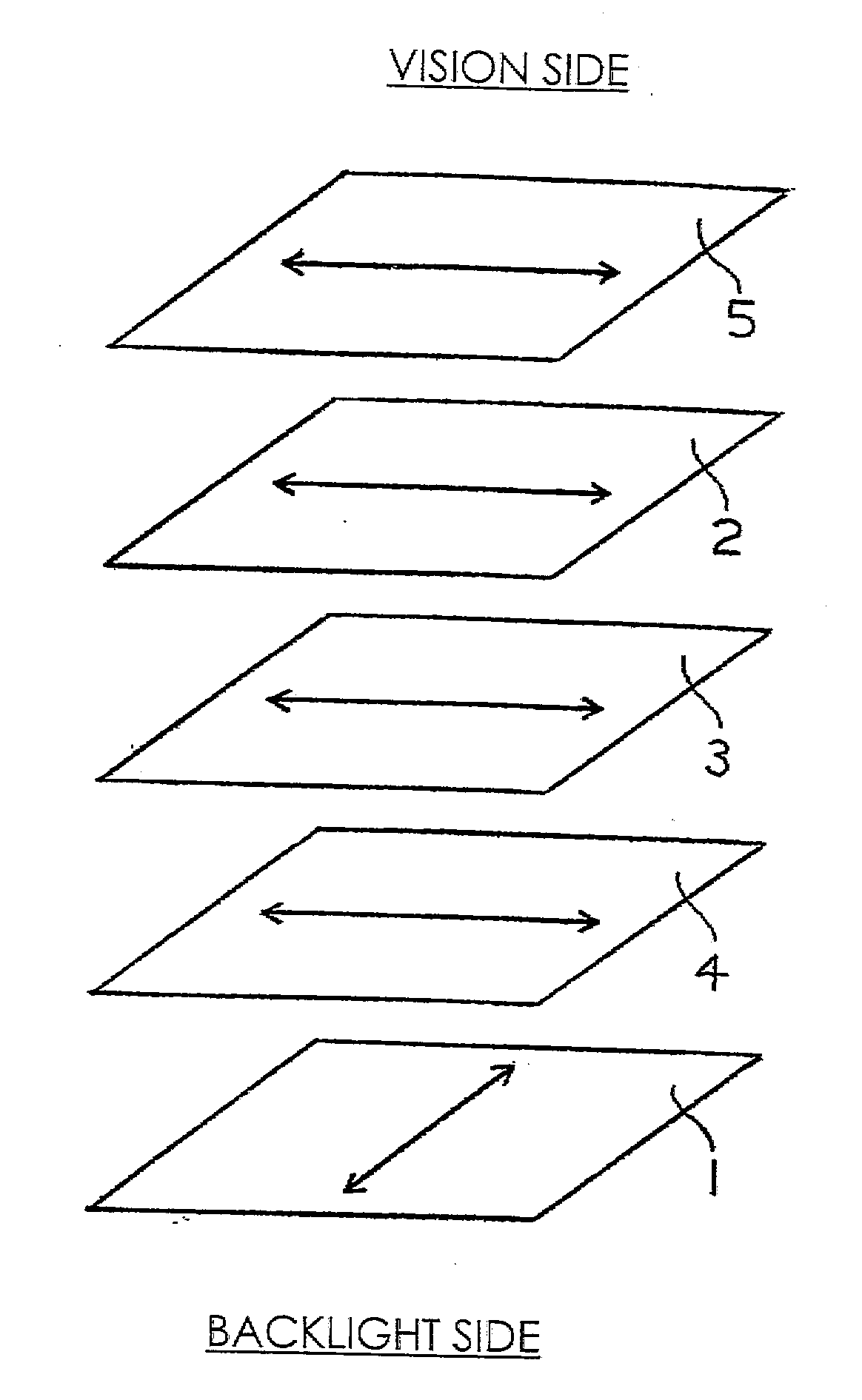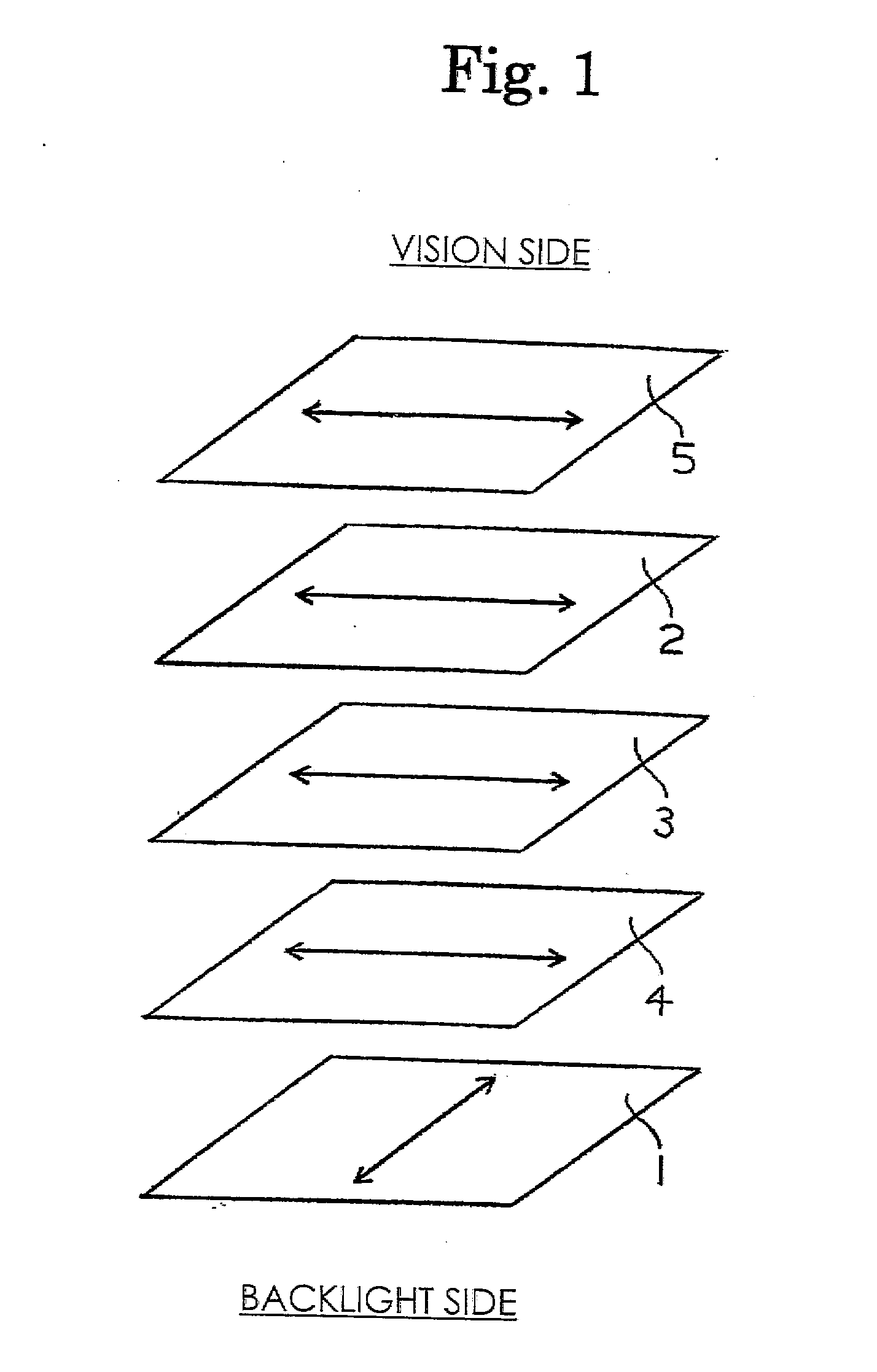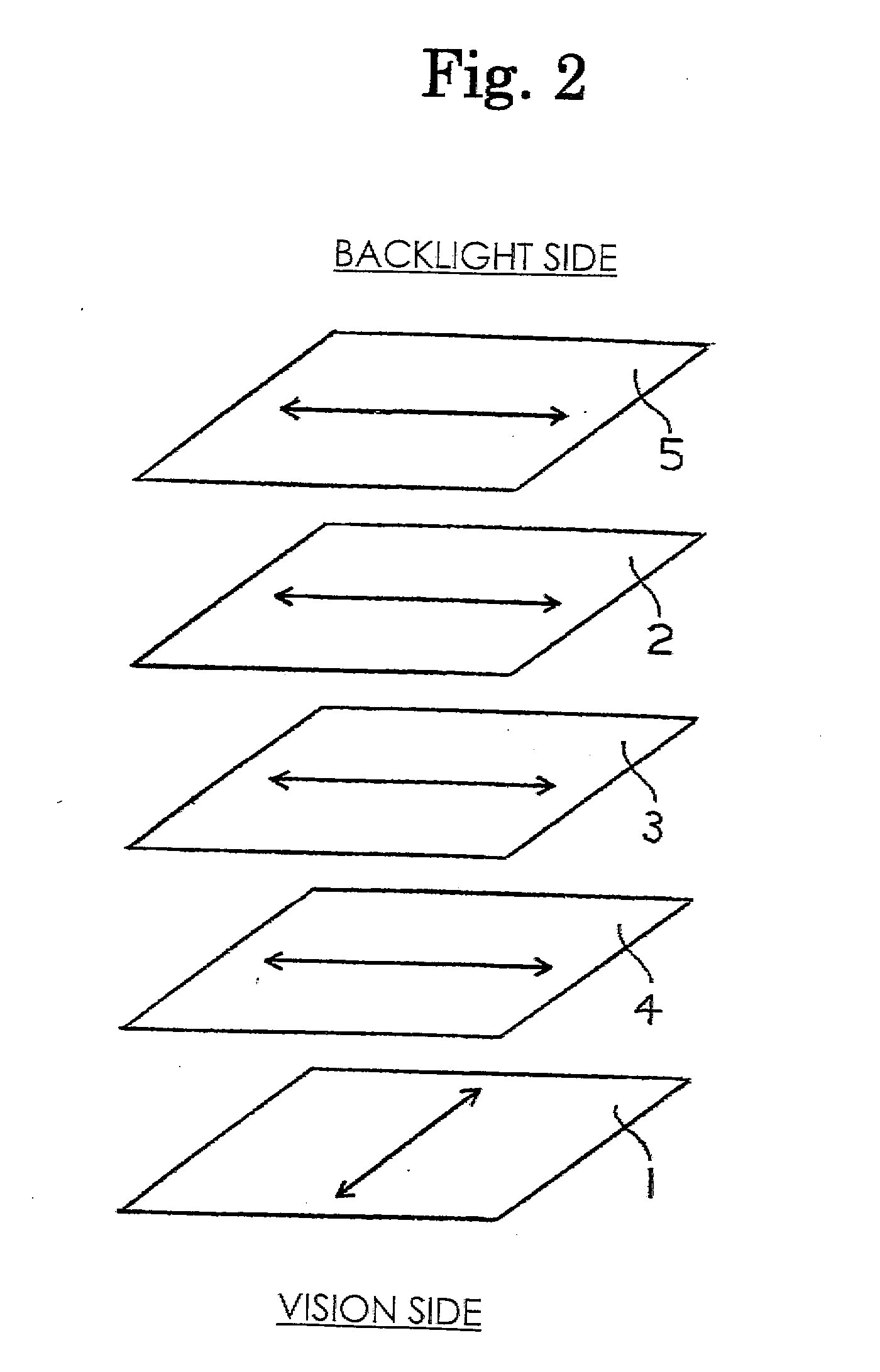Liquid crystal display device
a liquid crystal display and display device technology, applied in non-linear optics, instruments, optics, etc., can solve the problems of reducing the angle of field, difficulty in watching images, and large variation in brightness, color and contrast, etc., to achieve excellent antireflection properties, excellent contrast, and uniform display of images
- Summary
- Abstract
- Description
- Claims
- Application Information
AI Technical Summary
Benefits of technology
Problems solved by technology
Method used
Image
Examples
first embodiment
(I-1) the Preferable Arrangement
[0159]FIG. 3 shows a diagram exhibiting the first embodiment of the preferable arrangement (referred to as arrangement I-1, hereinafter) of the liquid crystal display device of the present invention. In arrangement I-1, the absorption axis of the polarizer at the output side and the in-plane slow axis of the liquid crystal of the liquid crystal cell under application of no voltage are disposed at relative positions parallel to each other. The in-plane slow axes of optically anisotropic member (A) and optically anisotropic member (B) are disposed at relative positions approximately parallel to each other. It is preferable that the in-plane slow axis of optically anisotropic member (B) and the in-plane slow axis of the liquid crystal of the liquid crystal cell under application of no voltage are disposed at relative positions approximately parallel to each other, and optically anisotropic member (A) is disposed at a position closer to the liquid cell th...
second embodiment
(I-2) the Preferable Arrangement
[0162]FIG. 4 shows a diagram exhibiting the second embodiment of the preferable arrangement (referred to as arrangement I-2, hereinafter) of the liquid crystal display device of the present invention. In arrangement I-2, the absorption axis of the polarizer at the output side and the in-plane slow axis of the liquid crystal of the liquid crystal cell under application of no voltage are disposed at relative positions parallel to each other. The in-plane slow axes of optically anisotropic member (A) and optically anisotropic member (B) are disposed at relative positions approximately parallel to each other. It is preferable that the in-plane slow axis of optically anisotropic member (B) and the in-plane slow axis of the liquid crystal of the liquid crystal cell under application of no voltage are disposed at relative positions approximately perpendicular to each other, and optically anisotropic member (B) is disposed at a position closer to the liquid c...
third embodiment
(II-1) the Preferable Arrangement
[0165]FIG. 5 shows a diagram exhibiting the third embodiment of the preferable arrangement (referred to as arrangement II-1, hereinafter) of the liquid crystal display device of the present invention. In arrangement II-1, the absorption axis of the polarizer at the output side and the in-plane slow axis of the liquid crystal of the liquid crystal cell under application of no voltage are disposed at relative positions parallel to each other. The in-plane slow axes of optically anisotropic member (A) and optically anisotropic member (B) are disposed at relative positions approximately parallel to each other. It is preferable that the in-plane slow axis of optically anisotropic member (B) and the in-plane slow axis of the liquid crystal of the liquid crystal cell under application of no voltage are disposed at relative positions approximately perpendicular to each other, and optically anisotropic member (A) is disposed at a position closer to the liquid...
PUM
| Property | Measurement | Unit |
|---|---|---|
| thickness | aaaaa | aaaaa |
| average oblique angle | aaaaa | aaaaa |
| oblique angle | aaaaa | aaaaa |
Abstract
Description
Claims
Application Information
 Login to View More
Login to View More - R&D Engineer
- R&D Manager
- IP Professional
- Industry Leading Data Capabilities
- Powerful AI technology
- Patent DNA Extraction
Browse by: Latest US Patents, China's latest patents, Technical Efficacy Thesaurus, Application Domain, Technology Topic, Popular Technical Reports.
© 2024 PatSnap. All rights reserved.Legal|Privacy policy|Modern Slavery Act Transparency Statement|Sitemap|About US| Contact US: help@patsnap.com










